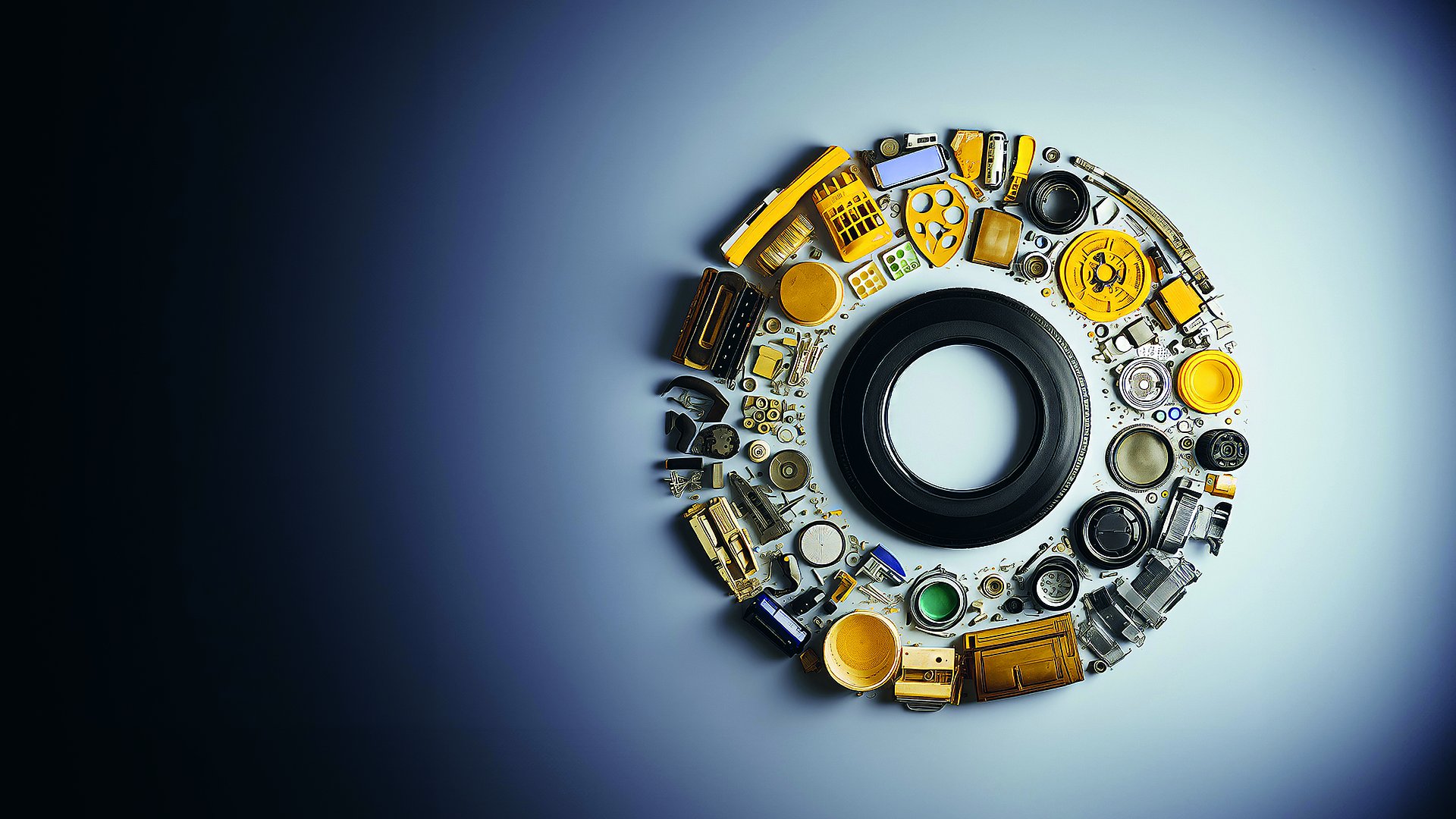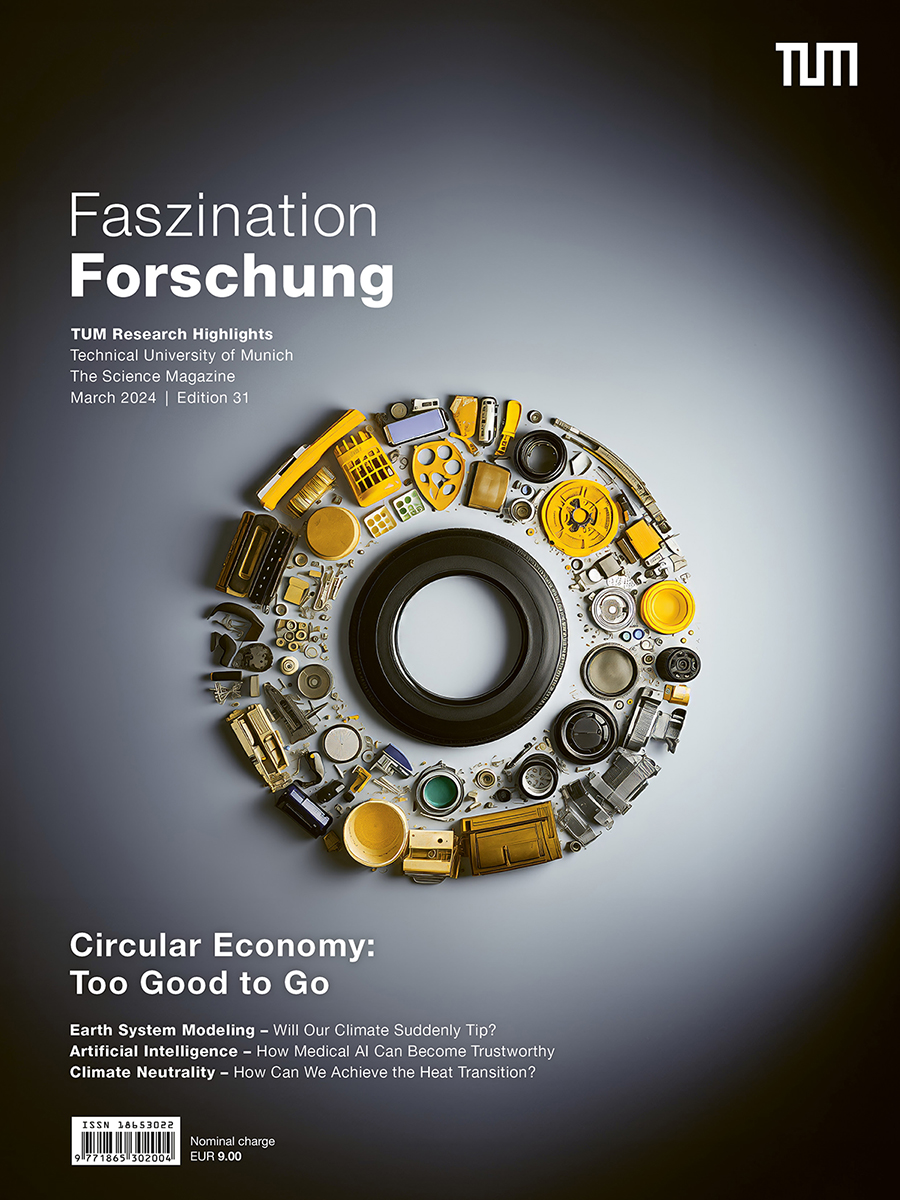“Faszination Forschung” Magazine no. 31
Circular Economy: Too good to go

Content
How Close is the Point of No Return?
Climate models can show how climatic changes often build up continuously for years, leading to a tipping point that may be irreversible. Niklas Boers and Christian Kuehn are investigating which parameters are particularly relevant for such tipping points.
Download: How Close is the Point of No Return? (pdf, 7,3 MB)
Building with Hops
The start-up HopfOn wants to produce recyclable, climate-friendly building materials from hops waste.
Download: Building with Hops (pdf, 500 kb)
Circular Economy: Too Good to Go
Circular strategies are intended to create sustainable material and product cycles. Magnus Fröhling and Johannes Fottner are developing methods to analyze and identify critical factors for implementation for example in the automotive industry.
Download: Circular Economy: Too Good to Go (pdf, 1,4 MB)
Quantum Sensors for Magnetic Resonance Imaging
A research team led by TUM has developed diamond quantum sensors that can be used to improve resolution in magnetic imaging.
Download: Quantum Sensors for Magnetic Resonance Imaging (pdf, 768 kb)
How Medical AI Can Become Trustworthy
AI systems in medicine must be particularly trustworthy. Daniel Rückert and his research team were able to show how patient data can be reliably protected when training algorithms with mathematical guarantees.
Download: How Medical AI Can Become Trustworthy (pdf, 9,5 MB)
Proteins for Singapore
Singapore wants to produce a third of its food requirements locally by 2030. TUM researchers are helping to develop protein-rich foods based on algae that taste like chicken and have a similar texture and consistency.
Download: Proteins for Singapore (pdf, 123 kb)
Wrap Up Warm - How can we achieve the heat transition?
TUM scientists are researching strategies and technology that can make the heat transition a success – from individual buildings to cooperations with local authorities, and from the expansion of geothermal energy to the introduction of digital solutions.
Download: Wrap Up Warm - How can we achieve the heat transition? (pdf, 20 MB)
How Can Research Advance Sustainable Transformation?
We ask TUM Vice President for Sustainable Transformation, Werner Lang, what TUM can do to enable the solutions developed for greater sustainability into practice.
Download: How Can Research Advance Sustainable Transformation? (pdf, 239 kb)

